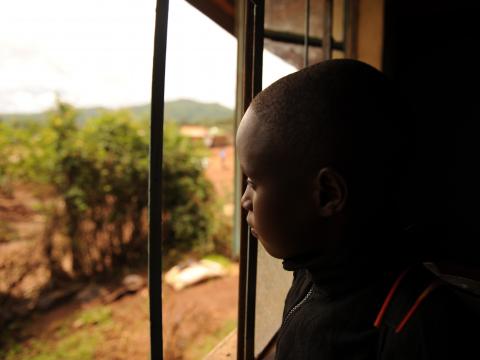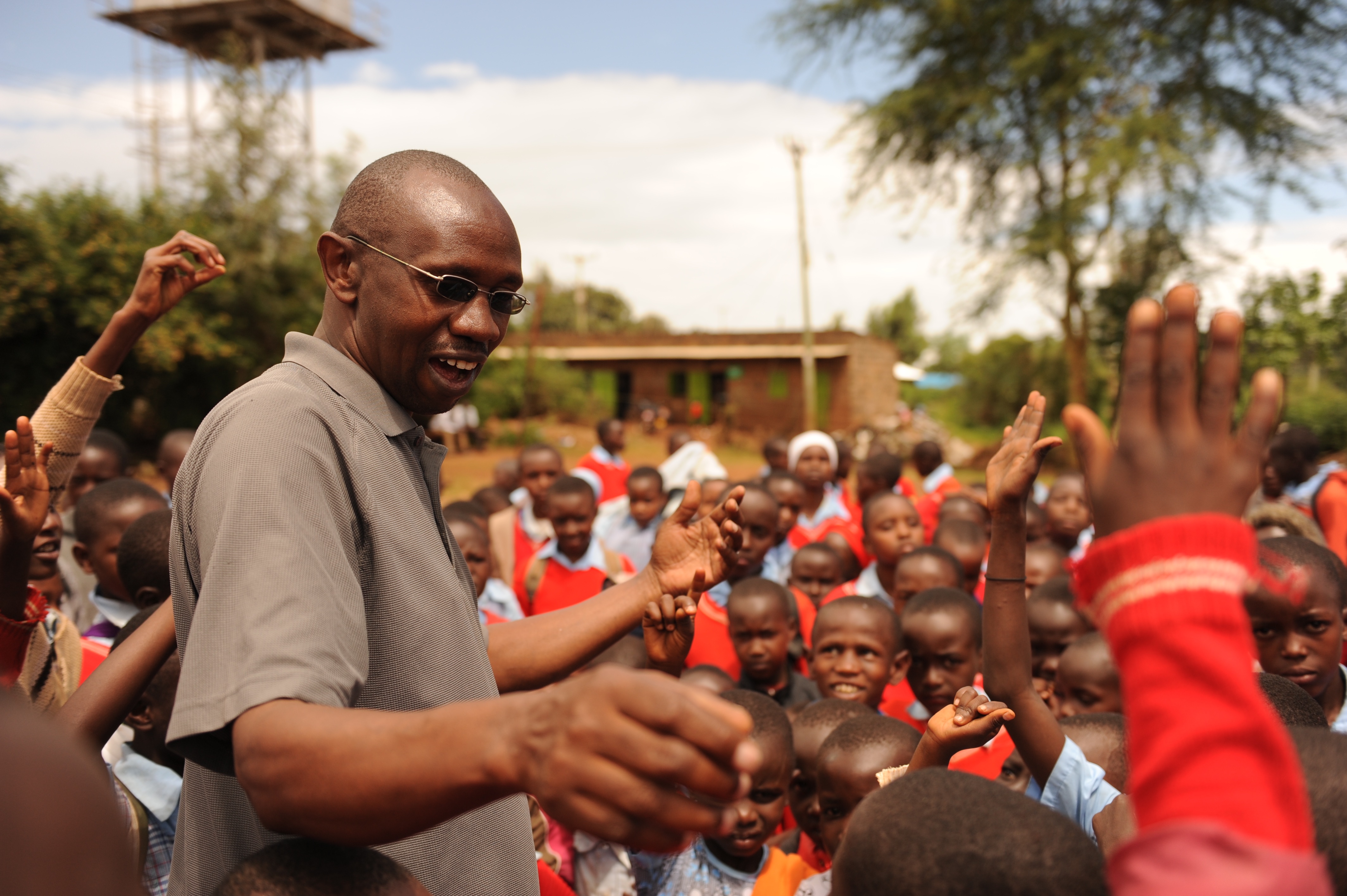Children still struggling to cope with harrowing effects of floods

A string of loud but pleasant voices emanate from a primary school compound in Nakuru County. It is the first day of school and children appear to be happily catching up during their lunchbreak.
Some are holding hands as they walk around the compound, even as others hold on to their metallic cups, waiting to be served porridge. This beverage is considered as a luxury by most pupils as they barely have enough to eat at home.
They are grateful for a church donation of maize flour made to the school which made it possible for them to enjoy the ‘free’ porridge.
Life has been difficult for many of them, following massive floods that wiped away families after walls of a nearby dam (called solai) burst, killing about 47 people and flattening approximately 250 households - based on government statistics.
"A sense of peace seems to engulf most of the pupils. But some of them are yet to come to terms with the tragic effects of the ordeal."
In as much as they are happy to be alive, they still mourn their parents, siblings, friends and school mates that were killed by the floods.
One such child is 11 year old Wanjiru whose mother died as a result of the Solai dam tragedy. During the interview, her dull and sad face reflected the immense grief she was dealing with, even though she was trying so hard to hide it.
When asked to share her experience, she did not immediately respond. Wanjiru bit her lips and bent her head. She then turned to face me and simply said: “It was bad.”
How it happened
On the fateful day, the family was enjoying dinner at about eight o’clock in the evening when Wanjiru’s mum excused herself briefly to get something in one of the rooms
“That was the last time we saw her,” Wanjiru said.
After the mum left, the rest of the family continued eating but paused when they heard the sound of moving water coming from outside. It was later followed by a loud bang!
“We peeped through a crack on the main door and what we saw shocked us. A lot of water was flowing in full force towards us, so we had to escape from the house.”
“But my mother wasn’t lucky, the water swept her away. We watched helplessly on that cold night, with no shelter, as her body was pulled from the scene together with those of other people who had died.”
Wanjiru remained silent for a moment, really struggling to maintain her calm. But her trembling lips and teary eyes betrayed her grief.
“Mum loved me so much. It was pure love that I still feel even now.She showered me with gifts just to make me happy and was always there when I needed her. In fact, she was the one who held my hand on the first day to school.”
While rubbing her hands against her black jumper and a maroon skirt, dotted with white flowers, which was also a donation from well-wishers.
Just as other children, she has no uniform and other school items such as books and pens. They were all destroyed by flood water.
“Most of these children lost all their belongings. We therefore need help in form of books, stationery, uniforms and any other items that can help them cope with their current situation and enable them to learn well,” said Mr Njoroge, the Head teacher of Solai primary school where most children affected by the floods learn.
The institution was not spared either. The floods destroyed six classrooms, leaving behind just concrete blocks on bare land.
Psychosocial support
According to Mr Njoroge, most of the affected children still live in fear and have nightmares of the fateful day.
“They may appear to concentrate in class but during breaks, their conversations centre around the burst dam and what it did to the community. Some of the children even go ahead and recount events of the horrific day through anguished voices and images that they draw on the ground.”
Based on his observations, Mr Njoroge said that most affected children are withdrawn. They also feel disoriented and confused about the calamity, wondering why it had to happen to them.
“I worry that if we don’t find a way to address this trauma that they are facing, then it will adversely affect their performance in the national exams.”
Their teachers are not any better. They too have to battle with grief and haunting memories yet remain strong so as to offer emotional support to the children.
To enable the community to cope with the adverse effects of the floods, World Vision Kenya has offered psychosocial support to about 110 children. This involved the use of play therapy where children were given balls to play with. They were also encouraged to sing songs of joy.
World Vision Kenya staff Eva Nyagah,who spearheaded the initiative stated that the aim of the psychosocial support is to enable the children to regain some sense of normalcy in the midst of all the trauma they are still going through.
“We want them to focus on things they love doing as this will prevent them from concentrating so much on the effects of the solai dam tragedy.”
Aside from the children, over 200 adults above the age of 45 also received psychosocial support, mostly through talk therapy.
“It was a moment to sit down and listen to them, then give them the support they require,”
She added: “We have done something but the children and other members of the community still need more assistance to help them come to terms with the tragedy.”
Besides food stuff and clothing, the community needs access to clean and safe drinking water. The school is also in need of repairs and new classrooms to replace those that were washed away by the floods.
Written by: World Vision Kenya Communications Officer Zipporah Kageha Karani. Focal point person in charge of Livelihood and Resilience, Disaster Management and Nutrition. Interested in content gathering to support fundraising and marketing and writing stories that capture the indispensable quality of timely truth telling with love.
.
